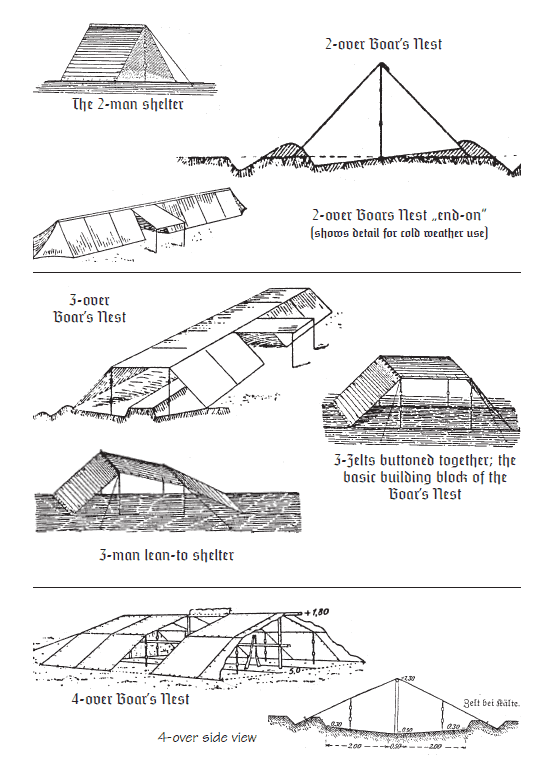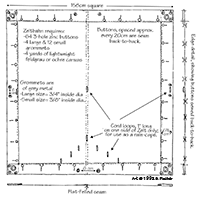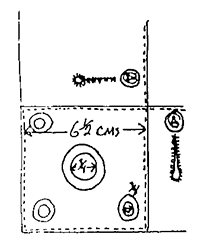
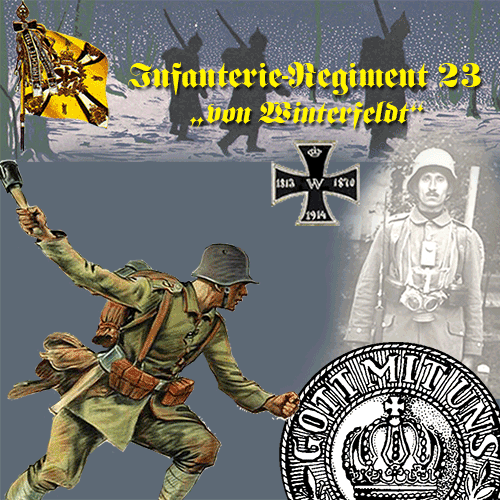
M.1892 Zeltbahn
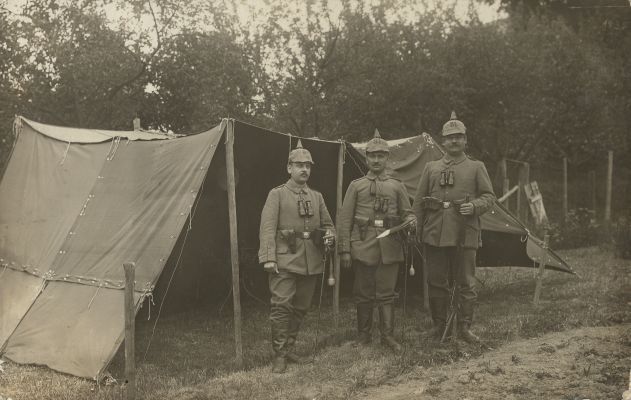 (M.1892 Shelter-half)—The Zeltbahn is one half of a small tent, consisting of a square-shaped piece of canvas with 32 opposing pairs of buttons. The Zelt also has small cord loops sewn onto it, through which the tent ropes are threaded so that they can tie around the neck and waist when using the Zelt as a raincape. Zeltbahnen (pl.) can be assembled in combinations of 2 or more to make a huge “Boars Nest.” Zeltbahns were manufactured in two different colors—ochre and grey. At the start of the Great War, Zelts were of a dark ochre color. As the war progressed, the color was changed to a less conspicuous grey color.
(M.1892 Shelter-half)—The Zeltbahn is one half of a small tent, consisting of a square-shaped piece of canvas with 32 opposing pairs of buttons. The Zelt also has small cord loops sewn onto it, through which the tent ropes are threaded so that they can tie around the neck and waist when using the Zelt as a raincape. Zeltbahnen (pl.) can be assembled in combinations of 2 or more to make a huge “Boars Nest.” Zeltbahns were manufactured in two different colors—ochre and grey. At the start of the Great War, Zelts were of a dark ochre color. As the war progressed, the color was changed to a less conspicuous grey color.
Although grey colored Zeltbahns are preferred, early-war ochre colored ones are just as acceptable. The Zelt must have all the proper buttons, grommets and loops and be of the correct measurements to attach to other standard Zelts.
The Zeltban
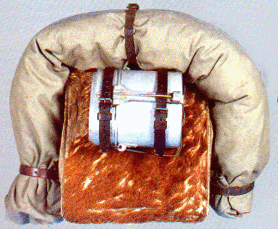 The Zeltbahn is an item every German soldier (and German reenactor) should have as part of their kit, the Zeltbahn served many practical purposes other than simply decorating the top of their M.95 Tornister (pack).
The Zeltbahn is an item every German soldier (and German reenactor) should have as part of their kit, the Zeltbahn served many practical purposes other than simply decorating the top of their M.95 Tornister (pack).
Up until about the middle of 1915, Zeltbahnen (that’s the plural of Zeltbahn, so calm down) were produced in russet brown (red ochre), matching the breadbag and strap. After 1915, all three were produced in varying shades of feldgrau. The Zeltbahn measures about 158 cm. X 158 cm. (63” x 63”). It is constructed of cotton duck, the quality of which declined after 1915.
The four sides have buttons and buttonholes along them, allowing many Zeltbahnen to be joined together to form very large tents. The corners each have 4 grommets for attaching cords, etc. Across the middle of the Zeltbahn are sewn five loops, and seven loops are sewn in a semi-circle at the top, which serve as a mount for the neck cord and waist cord when the tent is used as a rain cape.
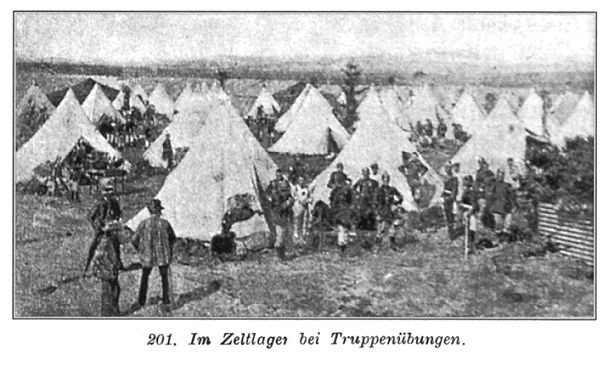 The English term “shelter quarter” is misleading when used to describe the Zeltbahn’s use as a part of a tent. With buttons and buttonholes on all sides, Zeltbahns could be combined in twos to form a “pup tent,” or as many as 20 could be combined to form very large tents. For use with the Zeltbahn, each soldier carried a bag in his pack that contained three stakes, three poles, three short cords and one long cord.
The English term “shelter quarter” is misleading when used to describe the Zeltbahn’s use as a part of a tent. With buttons and buttonholes on all sides, Zeltbahns could be combined in twos to form a “pup tent,” or as many as 20 could be combined to form very large tents. For use with the Zeltbahn, each soldier carried a bag in his pack that contained three stakes, three poles, three short cords and one long cord.
Other uses for Zeltbahnen include: dugout door flaps and ground cloths for playing Skat or sunning themselves. When fording a river, the soldier’s uniform and equipment could be placed in the Zeltbahn and floated across. Zeltbahns also could be folded and buttoned, two large poles then slipped through and the Zeltbahn became a stretcher. Finally, the Zeltbahn could serve as a shroud for a dead soldier; with a macabre sense of humor, German troops nicknamed their Zeltbahns Heldensarg (hero’s shroud), Krematorium (crematorium) and Leichentuch (funeral shroud).
